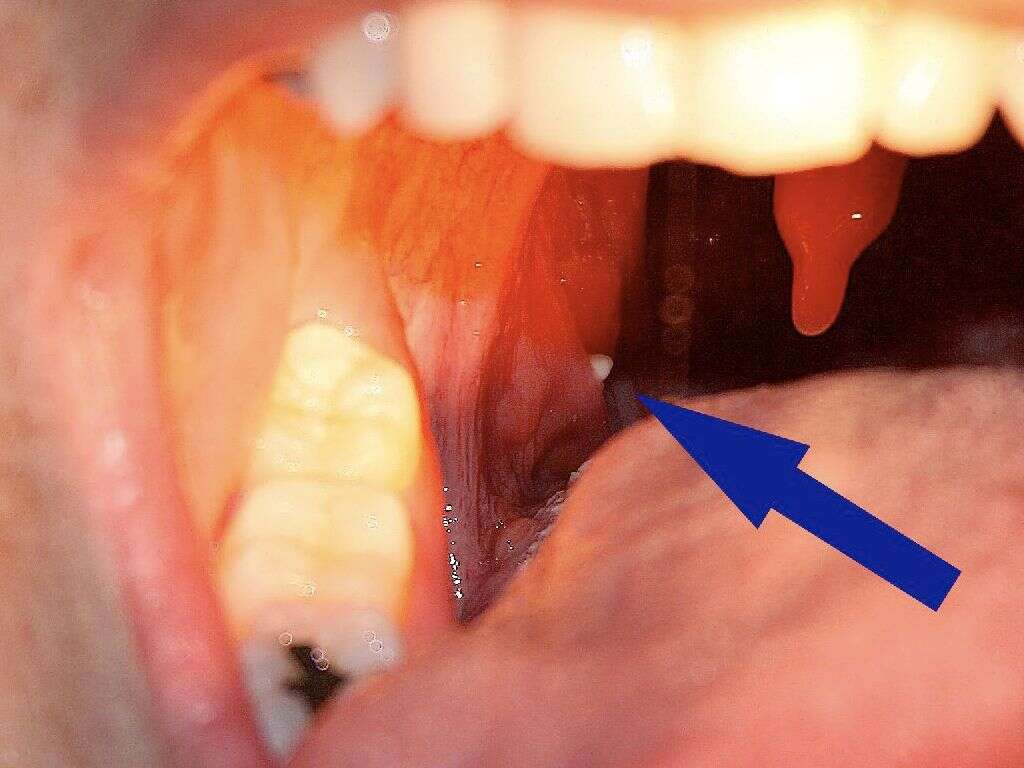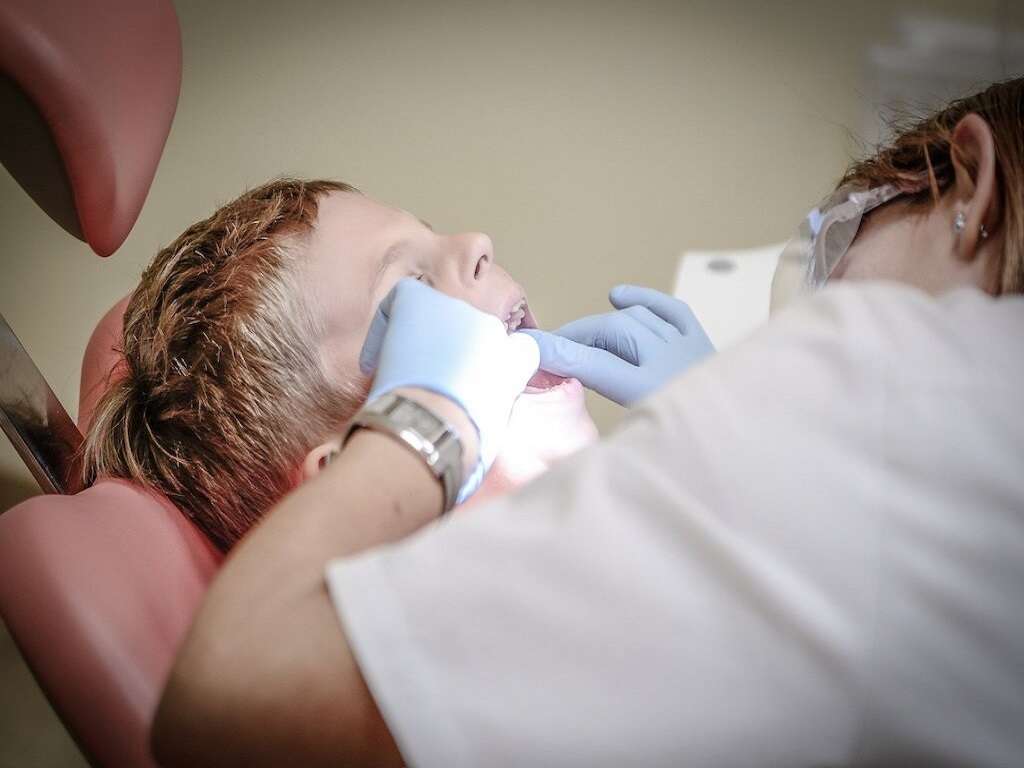What Is Viral Tonsillitis?
The tonsils are areas of soft tissue that are located at the back of the throat. They can be seen at either side of the mouth at the back of where the tongue is. They are a part of our immune system, and they are prone to developing infections from viruses.
Viral tonsillitis is, as the name suggests, a viral infection of the tonsils that causes them to become inflamed. It is a notoriously painful illness, made worse by the fact that it often infects young children. It is thankfully harmless in the vast majority of cases, and it will usually pass naturally with no lasting damage done.
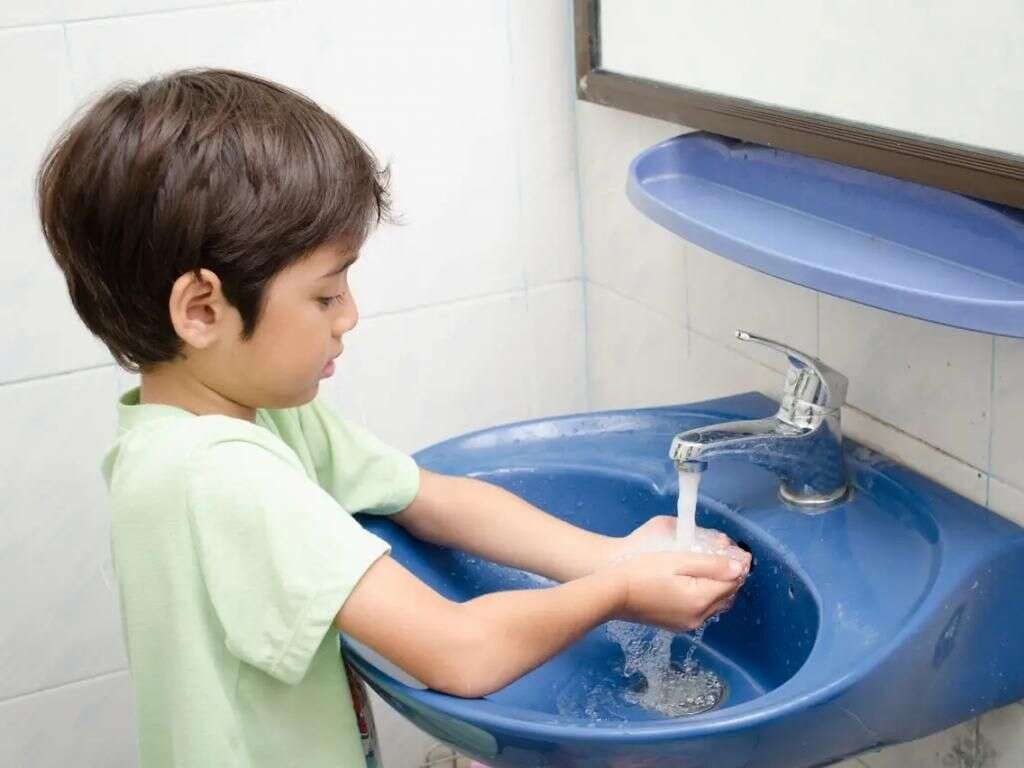
1. Tonsillitis
Tonsillitis is a condition where the tonsils become inflamed. It is a fairly common condition and it can affect people of all ages, although it tends to affect children more than it affects adults. It is not usually a serious condition, but it can still be very uncomfortable, especially where young children are involved.
There are numerous potential causes for tonsillitis. Bacteria are sometimes responsible but a virus is responsible in the majority of cases. The condition itself cannot usually be treated according to what is causing it. The symptoms can be treated, however, and the disease should pass naturally regardless.
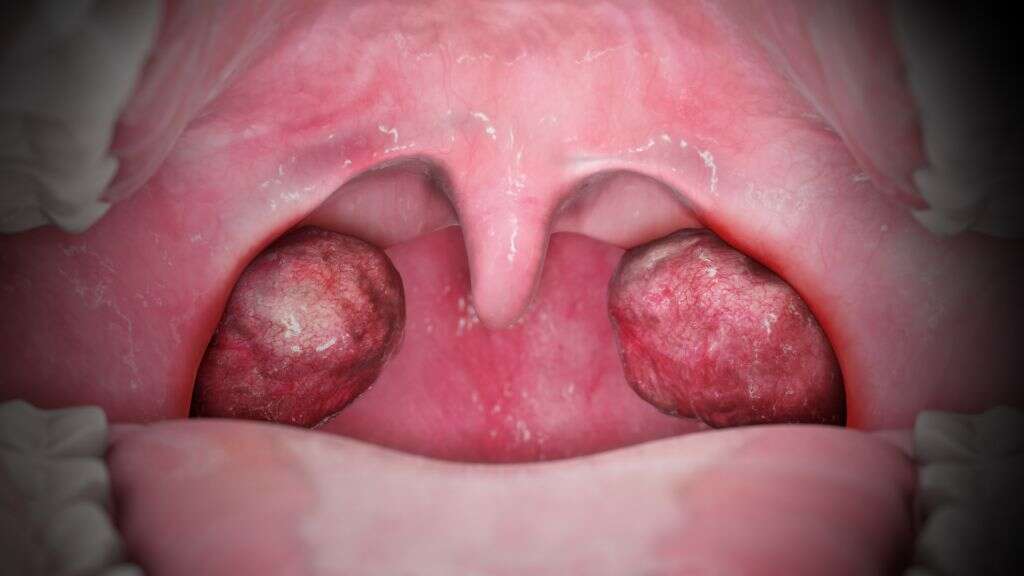
2. Causes
Our tonsils are often exposed directly to pathogens, after all they have evolved to help us deal with them. While they have evolved to help fight pathogens, they can sometimes become overwhelmed themselves, resulting in an infection. Such an infection can also go on to cause tonsillitis.
As mentioned, the most common cause of tonsillitis is a virus – resulting in what is known as viral tonsillitis. The viruses responsible are usually those also responsible for other diseases such as the common cold and the flu. Other viruses sometimes responsible include the Epstein-Barr virus, the herpes virus, and the HIV virus.

3. Red Tonsils
If you go to a doctor complaining of a sore throat, one of the first things they will do is ask to have a look inside your mouth. This is because the symptoms of certain conditions, including tonsillitis, are often easily visible. If tonsillitis is present, the doctor will likely see tonsils that are clearly swollen and very red in color.
Also present will be white/yellow areas coating the patient’s tonsils. The patient’s throat will likely be very painful indeed and this can make it difficult for them to swallow and speak. The patient’s voice can also become muffled and hoarse.
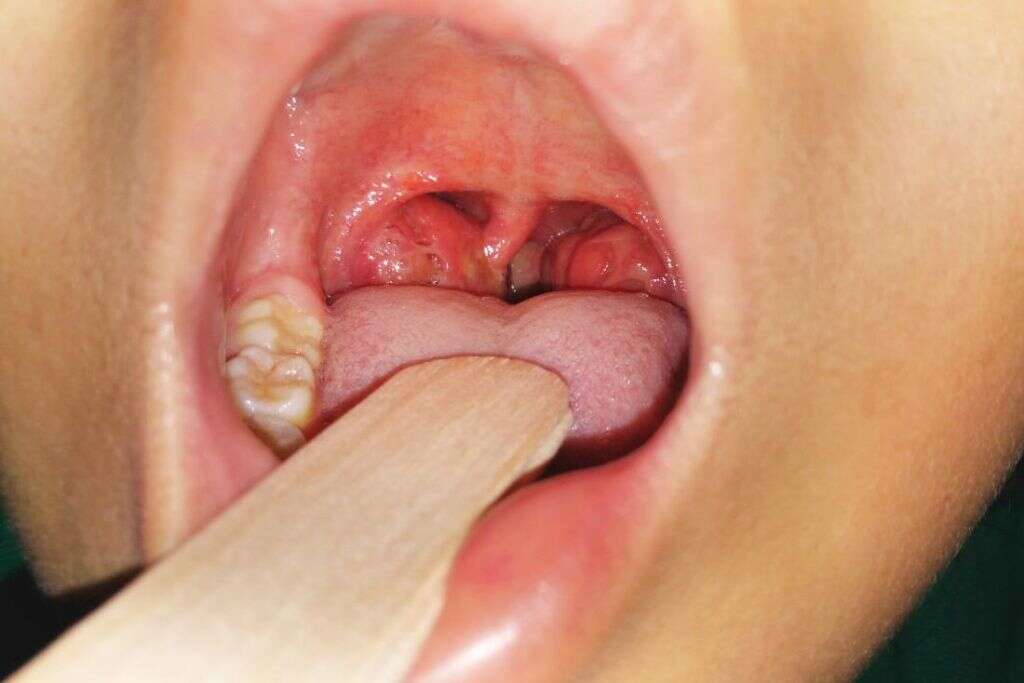
4. Fever
In cases of viral tonsillitis, the body will react to try and remove the virus from the body. The immune system will heat the body up to levels that are too hot for a virus to survive, slowing or maybe killing the virus outright. This is known as a fever, and nearly everybody would have experienced one at some point in their lives.
Another part of the immune system, the lymph nodes, will also be called into action. As they battle to help defeat the virus, they too can become visibly swollen. Patients will also sometimes complain of a stiff neck and/or a headache. If the patient also has bad breath, the infection is likely to be bacterial.

5. Stomachache
While a tonsil infection may be located in the throat, some people will also find it causes a stomach ache. This is because the infection will sometimes cause lymph nodes in the abdomen area to be hard at work battling the infection. This can cause them to become swollen also, and this can result in considerable discomfort in the abdomen area.
Stomachache is not a common symptom of tonsillitis, and children are more likely to develop the symptom than adults are. Regardless, you should always let the doctor know you have a stomachache as well to help them come to the right diagnosis.

6. Young Children
As mentioned, young children are particularly prone to developing viral tonsillitis, and this includes very young children who are too young to talk. This means that are not yet able to tell you that they have a problem, but they will usually show signs that they are not well.
One sign is that it appears painful for them to swallow, and they may also be drooling more than usual. They may also not want to eat, partly because of the pain it can cause. In addition, they may also be fussier than they usually would be, so pay attention if they appear to be harder to pacify than usual.

7. Who’s at Risk
The tonsils take a more prominent role in the immune system in young children, which is one reason why they are more prone to developing tonsillitis than adults are. Children that are of school age are also at a higher risk because children tend to stay close together in tight groups than adults do.
Adults that work with children are also at a higher risk of catching tonsillitis, and parents with young children are also more likely to catch it than most. What’s more is that people who have a weakened immune system are also more likely to get the disease.

8. Complications
While tonsillitis is not usually a serious condition, problems will arise in a small number of cases. One of these is sleep apnea, which is a condition where the patient keeps on waking at night because of difficulties breathing. Some people will also develop chronic tonsillitis, which means the infection will keep on returning and/or will last for longer than usual.
The pain caused by tonsillitis can mean patients become reluctant to eat and drink. This can result in potentially serious conditions like malnutrition and dehydration. If a bacteria is the cause then the patient might develop infections elsewhere in the body.

9. Prevention
One of the most effective ways of avoiding viral tonsillitis is to wash your hands regularly. This will help to prevent contracting the virus after it has been picked up after contact with infected people or surfaces. This means before and after eating and using the bathroom, and at other times throughout the day.
You should also try and avoid sharing crockery and drinking vessels with other people. Trying to cough or sneeze into tissues will also help to prevent the spread of disease. Try and keep away from people that appear to be ill, and also try and avoid going to public places if you are ill yourself.

10. Treatment
In cases of viral tonsillitis, there is usually no treatment given, at least not for the underlying cause. The immune system will be able to handle the virus itself and it should pass within 10 days or so. In cases of bacterial tonsillitis, an antibiotic may be prescribed to help fight the infection.
Patients with viral tonsillitis are usually recommended to take it easy and get plenty of rest. They are also recommended to get plenty of liquids, and soft foods like soups can make it easier for the patient to eat. Medication like lozenges can help to numb the throat, while other symptoms can also be treated to help make the patient more comfortable. The tonsils may be removed altogether if they are frequently infected.




